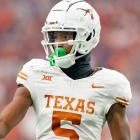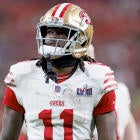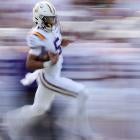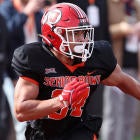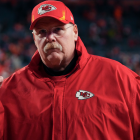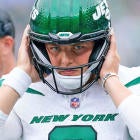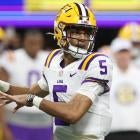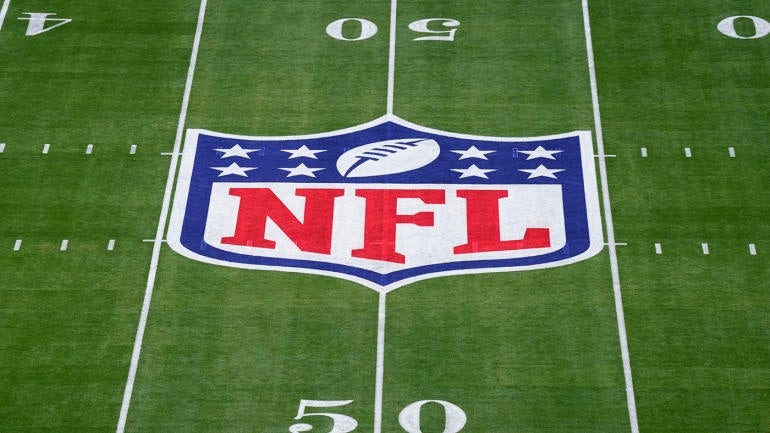
NFLPA president JC Tretter has been asking for the NFL to improve playing surfaces to decrease unnecessary injuries. Tretter, after taking feedback from players who have expressed concern about some of the league's playing surfaces, has asked the NFL -- among other things -- for an immediate ban of slit film turf back in November.
The plea worked as two stadiums, MetLife Stadium (New York Giants and New York Jets) and Ford Field (Detroit Lions), won't be using that specific turf in 2023. However, slit film turf is still currently used in four stadiums: U.S. Bank Stadium (Minnesota Vikings), Caesars Superdome (New Orleans Saints), Lucas Oil Stadium (Indianapolis Colts) and Paycor Stadium (Cincinnati Bengals).
Now, Tretter is pushing for the unanimous use of natural grass playing surfaces across the league, highlighting that injury rates on natural grass were lower over an eight-year period from 2012-2020 in a letter published on the NFLPA website Wednesday. However, the turf and natural grass injury percentages were similar in 2021, something Tretter labeled an "outlier."
"Instead of following the long-term data (which is clear on this issue), listening to players and making the game safer," Tretter said in his letter. "The NFL used an outlier year to engage in a PR campaign to convince everyone that the problem doesn't actually exist. In short, last year, the gap -- much like the NFL's credibility with players on this issue -- was as wide as it has ever been, proving that (as the NFLPA suspected) 2021 was in fact an outlier. Now, 10 of the previous 11 years show the same exact thing -- grass is a significantly safer surface than turf."
The league addressed Tretter's claims on Thursday with a statement, via ESPN, from Jeff Miller, the NFL's executive vice president of communications, public affairs and policy. Miller's bottom line was "there are no simple answers."
"The NFL and the NFLPA have access to the same injury information, which is collected by independent experts and shared at the CBA-mandated Joint Field Surface Safety and Performance Committee meetings," Miller's statement said. "The committee, including the NFLPA's experts, believe that simply playing on natural grass is not the answer to this complex challenge. Some artificial turf surfaces have a lower injury rate than some grass fields -- and some grass fields have a lower injury rate than some artificial surfaces. Our goal is to decrease injuries on all surfaces. There are no simple answers, but we are committed to the substantial, ongoing work with the players and their expert advisors to make the game safer."
The gap between the injury rates between grass and turf began to close in 2020, and the data was nearly equal in the 2021 season. Artificial playing surfaces had an injury rate of .042 per 100 in 2021, while the number for natural grass was .041 per 100. That ratio "replicated" during the 2022 preseason, Miller highlighted at the start of the 2022 season
The regular-season data from 2022 once again indicated turf was more hazardous. The rate for non-contact "lower-extremity" ailments on artificial turf jumped up to .048 per 100. The natural grass rate was noticeably lower at 0.035.
In a letter issued through the NFLPA's website in November, Tretter noted that games played on slit film turf have higher in-game injury rates compared to other playing surfaces. Non-contact injuries and foot and ankle injuries are among the injuries that statistically occur more on slit film turf, according to Tretter.
"The NFL and its experts have agreed with this data and acknowledge that the slit film field is less safe," Tretter wrote. "Player leadership wrote a letter to the NFL this week demanding the immediate removal of these fields and a ban on them going forward, both in stadiums and for practice fields. The NFL has not only refused to mandate this change immediately, but they have also refused to commit to mandating a change away from slit film in the future at all."
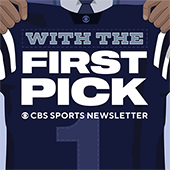
With The First Pick Newsletter
With The First Pick Newsletter
Prepare for the upcoming NFL Draft with the day’s big stories + mock drafts, big board updates and more.
Thanks for signing up!
Keep an eye on your inbox.
Sorry!
There was an error processing your subscription.
Tretter is also asking the NFL to not allow games to be played on fields with clear visual abnormalities. He also wants the NFL to raise the field standards and test the safety and performance of all field surfaces. Lastly, Tretter called on the NFL to clear excess people and dangerous equipment from the sidelines.
"We play one of the most dangerous sports in the world; it shouldn't be more dangerous because the clubs won't do anything to remove the simple injury risks on practice and playing surfaces," Tretter wrote. "If the league wants to actually use data to drive its decisions, then do it already. We've been waiting for years for some of these changes."
Tretter's concerns regarding slit film turf have merit. Just ask the 49ers, who lost a host of players in 2020 after San Francisco played games at MetLife Stadium, which is one of the stadiums that currently uses slit film turf. Richard Sherman, a 49ers cornerback at the time and currently the NFLPA vice president, called on the NFL to ban slit film turf while using his spotlight as an Amazon analyst for Thursday night games.
"It needs to change immediately," Sherman said, via Cincinnati.com. "The league champions player safety. And when there's clear evidence of a playing surface being dangerous -- there's nine more serious injuries on this surface than even other turfs -- like, you need to change it now.
"You get on it immediately. There has been 15-18 more injuries just this season. So that data that they compiled hasn't included this season. … As a player, there's no reason for that kind of risk. These are outdoor stadiums. … They can change that. The indoor stadiums -- cool, there's an argument there. But when you can change the surface, it should be grass. … Player safety is nonnegotiable."














